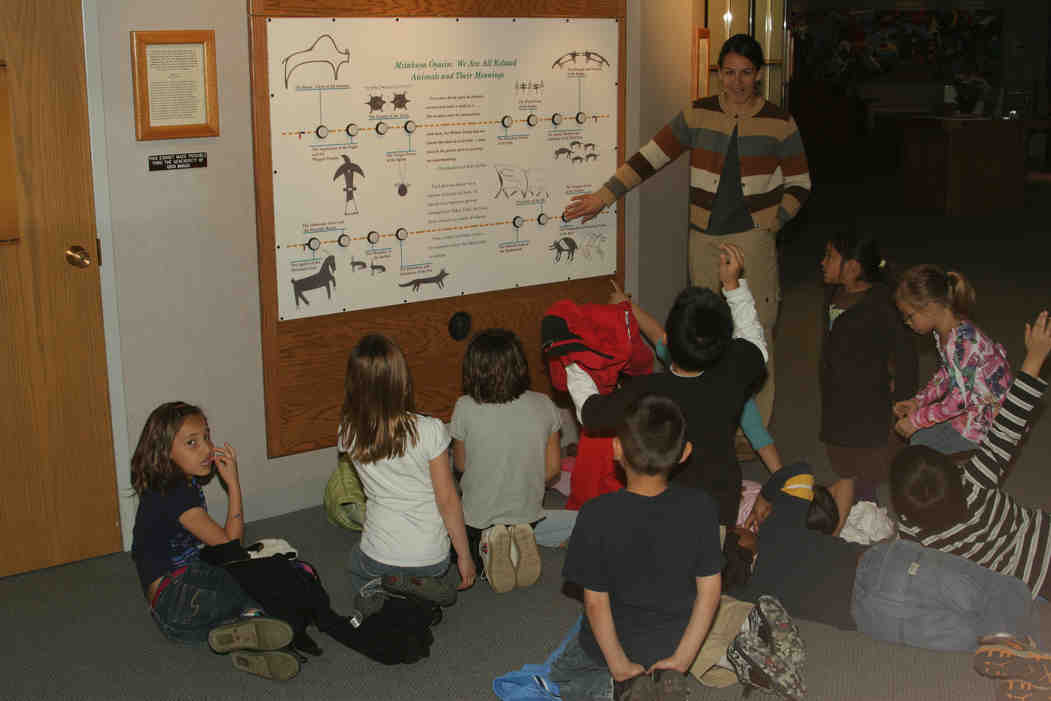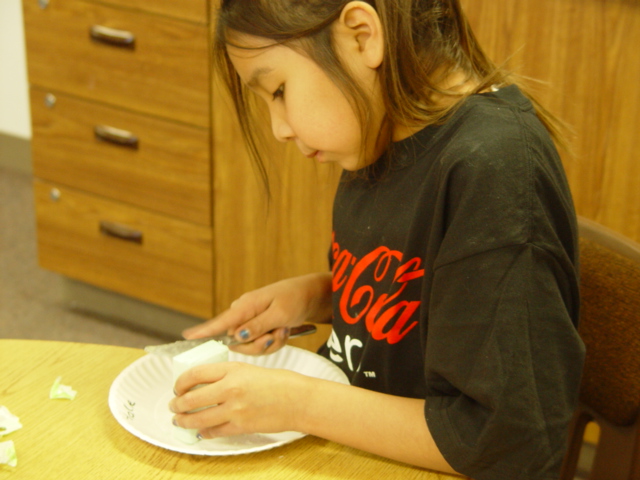Ironically, the 5th graders are assigned a unit about People of the Plains as a part of their curriculum. This always leaves me scratching my head because my class, Native American Studies, is pretty much all about the People of the Plains. From the time the kids begin in first grade and go on up to eighth grade, they will have learned many concepts about our beautiful Lakota (Sioux) culture.

To begin, I asked the students to make a KWL chart. This is a chart that lists what you know (K), what you want to know (W) and lastly, what you learned (L). Thanks to this process, I was able to tailor the lessons so I didn’t teach something they already knew about. I was able to directly show and discuss actual artifacts from our classroom and the Akta Lakota Museum & Cultural Center on campus.
Some questions they had were about tools, weapons, clothes, food, games, tasks, horses, dogs, child rearing, medicine men, moons and medicines. We learned from the internet, class discussions and by viewing and touching many items at the museum. Visiting the museum was their favorite activity. They touched bones that were used for painting, cutting, sewing, scraping and working. They also learned how paint was made, how items were decorated with porcupine quills, eagle feathers and buffalo parts that were used for practical uses. For example, the buffalo bladder was used as a water carrier, the skin became blankets and the tail was used as a fly swatter.
After the unit was finished, I reflected on how I am really thankful to have this unit. It gives the kids a chance to ask questions about what they want to know and it gives me an opportunity to teach and talk about some different, awesome avenues of our Lakota culture.





